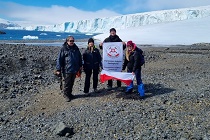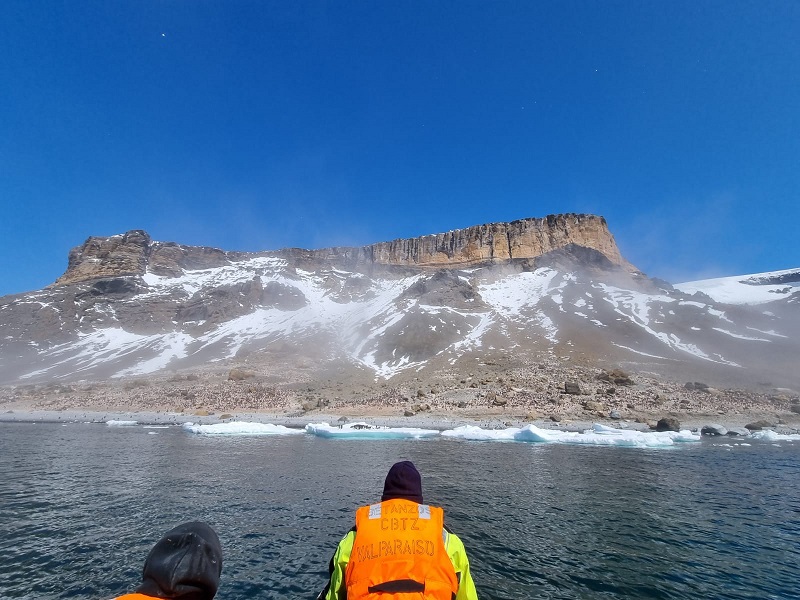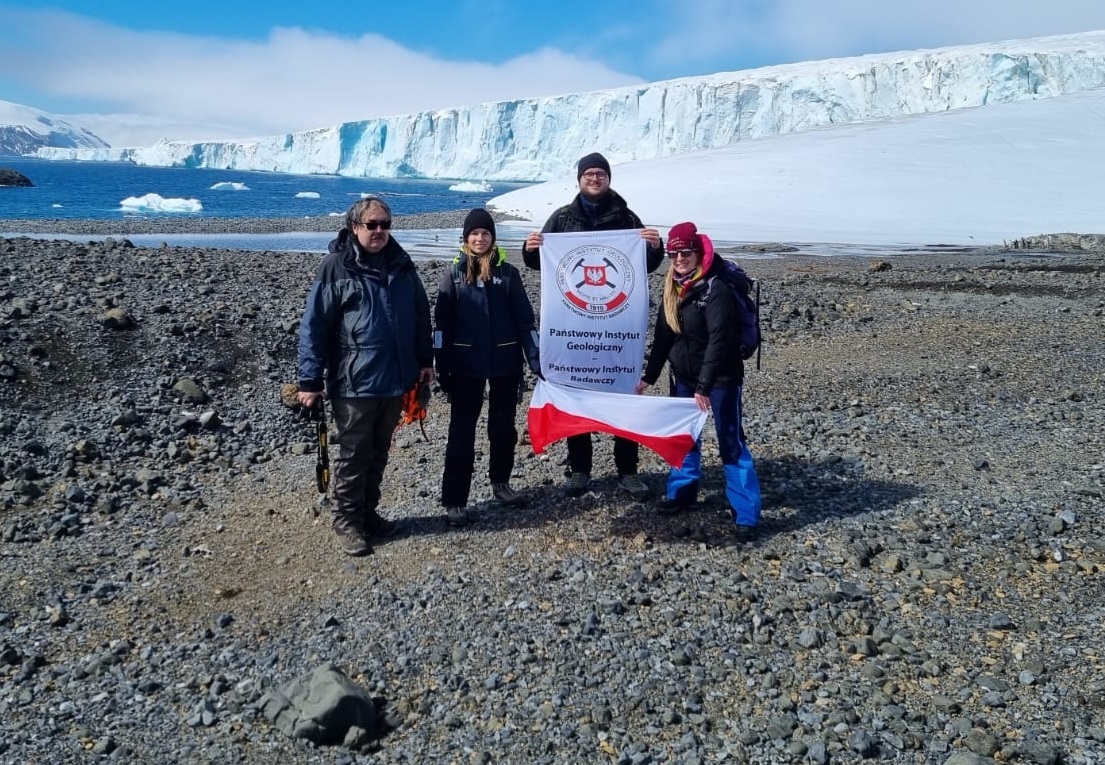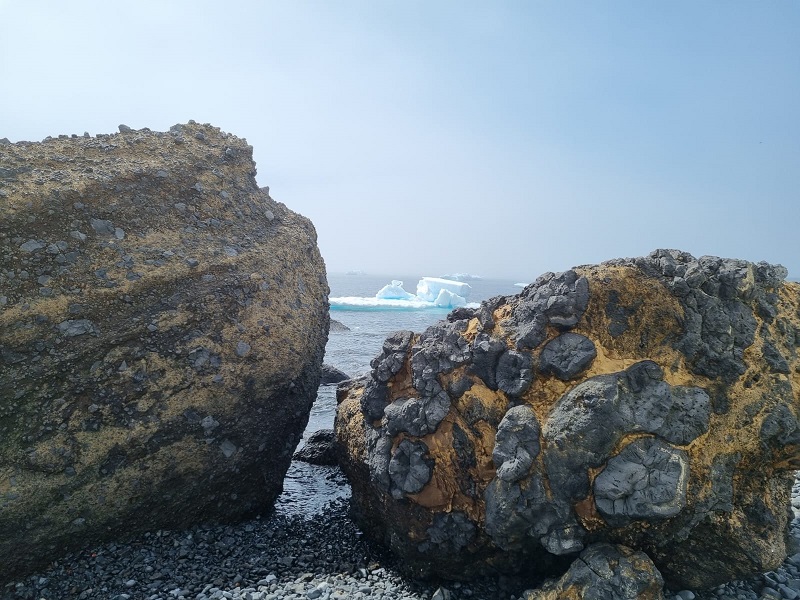 On 28 December 2021, geologists from the Polish Geological Institute - NRI set off on another Antarctic expedition. This time, the main objective of the expedition is a glacial analysis aimed at determining the isotopic age of erratics from the sediments of the Polonez and Melville glaciations.
On 28 December 2021, geologists from the Polish Geological Institute - NRI set off on another Antarctic expedition. This time, the main objective of the expedition is a glacial analysis aimed at determining the isotopic age of erratics from the sediments of the Polonez and Melville glaciations.

View of the Antarctic Peninsula from the sea
The Antarctic is an area that includes Antarctica and the surrounding seas and islands. Due to its climate and location, it is still the least known part of the world - also in terms of geology. It is the only continent uninhabited by humans, however many countries, including Poland, have their research stations here. However, due to the fact that this area is considered as a shared heritage of all mankind, it was included in the Antarctic Treaty signed in 1959. It is an agreement that forbids activities with economic benefits and is meant for cooperation between countries to develop science. Poland joined the Antarctic Treaty in 1961 and gained voting rights in 1977.
Thanks to the cooperation of PGI-NRI with the Polish Academy of Sciences and courtesy of the Chilean Antarctic Institute (INACH), the first point of the expedition of our scientists is the Antarctic Peninsula, which is the northernmost part of the continent of Antarctica. After exploring this area, an expedition is planned to the King George Island in the South Shetland archipelago, where the Polish Arctowski Research Station is located off the coast of Admiralty Bay. This provides excellent opportunities to study the sediments of the oldest Antarctic glaciations, which is the most important task for PGI-NRI scientists participating in the expedition.

A team of researchers from the Polish Geological Institute - NRI started their research in Antarctica. Photo from left: Jerzy Nawrocki, Agata Kozłowska-Roman, Rafał Małek, Ewelina Krzyżak
Before the continent of Antarctica was permanently covered by the modern ice sheet, a series of successive glacial and interglacial periods cyclically altered its landscape and climate. This was mainly the result of the opening of the Drake Strait and a change in ocean circulation at the turn of the Eocene and Oligocene. Remnants of the largest of the past Antarctic glaciations are the sediments of the Oligocene Polonez Cove Formation, which commonly contain pebbles of rocks brought by glaciers from the interior of the continent. Investigations of these erratics will provide a better understanding of the geological structure of a hard-to-reach part of Antarctica and the reconstruction of glacial transport directions.
More enigmatic, and therefore even more interesting, are the sediments of the Cape Melville Formation, which contains deposits of early Miocene Antarctic glaciation - the youngest/last fossil glaciation. So far, similar deposits of this age have not been found anywhere else - they are only available at the eastern end of the hard-to-reach part of the island.
The next points of the expedition are the Melville Peninsula and the vicinity of Lions Rump, located at a considerable distance from the Polish polar station.
Struktury Półwyspu Antarktycznego są efektem wieloetapowej subdukcji płyty oceanicznej z płytą kontynentalną Antarktydy, który objęła również zachodnie wybrzeże kontynentu Południowoamerykańskiego. Proces ten doprowadził do powstania orogenu Andyjskiego o dużej rozciągłości, który w wyniku powstaniu cieśniny Drake’a na przełomie eocenu i oligocenu (ok. 40 mln lat temu) rozbił górotwór na część Antarktyczną i Południowoamerykańską.
The structures of the Antarctic Peninsula are the result of multistage subduction of the Antarctic oceanic plate with the Antarctica continental plate, which also included the west coast of the South American continent. This process led to the formation of the long-distance Andean orogeny, which split the Antarctic and South American mountain ranges as a result of the formation of Drake Strait at the turn of the Eocene and Oligocene (about 40 million years ago).

Blocks of volcanic breccia and weathered pillow lava (Antarctic Peninsula)
Text: Agata Kozłowska-Roman, Jerzy Nawrocki
Photos: Ewelina Krzyżak, INACH
Translated by Tomasz Trzpil (PGI-NRI)














 PGI-NRI offer
PGI-NRI offer Mineral resources of Poland
Mineral resources of Poland  Oil and Gas in Poland
Oil and Gas in Poland 




 Subscribe to RSS Feed
Subscribe to RSS Feed